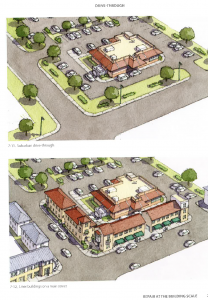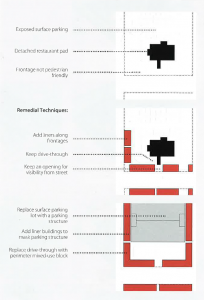
Image Credit: Sprawl Repair Manual by Galina Tachieva of DPZ CoDesign

Jonathan Hopkins of Urbanismo makes a compelling case that the NPS’s evaluation criteria for nominating properties to the National Register of Historic Places should be revised to address concerns that preservation funding will become increasingly available for use by sprawling Post-War suburban subdivisions like Levittown, New York as they reach their 50 year eligibility mark.
“It becomes necessary to make clear criteria-based distinctions between sprawl and other development patterns like neighborhoods and small towns in order to prevent the preservation of obesity, social dysfunction, and environmental degradation.”
“By taking a proactive approach sooner rather than later, the prevention of preserving sprawl in its current state can be realized. The preservation movement – in coordination with environmentalists, developers, medical physicians, and others – can encourage law-makers to pass legislation to amend the Secretary of the Interior’s standards to include suburban retrofitting guidelines that outline appropriate initiatives to be funded by tax credits and planning grants at both the State and Federal level. In coordination with land-use, zoning, tax, and development policy reforms that discourage new suburban sprawl developments, historic preservation funding sources can encourage the retrofitting of sprawl into a more sustainable, accessible, affordable, and attractive living arrangement.”